Calories Burned Calculator
Welcome to the calories burned calculator, the tool that simplifies the process of how to calculate calories burned, making you smarter in the process. Based on the activity type and duration, it estimates how many calories you have burned. Then, it can tell you how much weight you can expect to lose given the calories burned walking, for example. On top of that, in this calorie calculator, we talk about lost calories per day, how to burn more calories with fitness, and explore the health benefits of exercising, such as the prevention of heart disease.
Still not enough? You can also compare two activities to know which will help you lose more weight in less time.
Prefer watching rather than reading? We made a video for you! Check it out below:
What are calories?
Put simply, calories are a measure of energy. Traditionally, it was a reasonably common unit of energy, but nowadays, it's been relegated to describe almost solely nutrition and the energy content in food. The definition of a calorie is the energy required to raise the temperature of 1 gram of water by 1°C. In modern times the definition of a calorie has been tuned and improved to a more reliable and repeatable one until we have arrived at the current: 1 calorie is equivalent to 4.18 joules.
In nutrition, we actually deal with kilocalories (kcal), where 1 kcal is equal to a thousand "small" calories. This kilocalorie is often called large calorie, Cal, or Calorie (with capital 'C'). As you imagine, 1 kcal = 4.18 kJ. In this article, we use the term "calories" to describe kilocalories for simplicity.
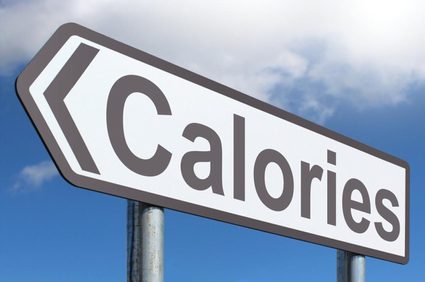
When you mention calories, people immediately think about nutrition, weight loss, and even health problems associated with being overweight, such as heart disease. This reaction is because body fat and calories are very closely related. Body fat is the way our body stores energy for times of necessity. Body fat is how we store those extra calories that we ate but never burned. Fat is not necessarily a bad thing, as we explained in our healthy body fat calculator.
There is a simple way to calculate calories from fat based on body fat's energy density. Each kilogram of body fat stores about 7700 kcal. This equivalence allows the burned calories calculator to predict the weight loss derived from a certain exercise. However, this is just an oversimplification since "calories in vs. calories out" is not the whole story when it comes to weight loss. We will go a bit more into the details in a later section. For now, let's focus on the calculator.
How to calculate calories burned
Since calories are, effectively, energy, any time energy is used or transformed in our body, we consume calories. That includes those times when we are apparently doing "nothing" since, fortunately for us, our body is still functioning and consuming energy. The energy is consumed in activities such as pumping blood through our system, processing food in our digestive system, and even thinking (the brain burns about 20% of our daily calories).
But when we talk about consuming calories, we tend to think more about the conscious act of exercising and expending extra energy compared to the normal or basal metabolic levels.
As you may have guessed, every exercise needs a different amount of energy. The number of calories burned by walking is smaller than by running or cycling; and, e.g., burpees burn even more calories (see burpee calorie calculator). This energy expenditure is typically expressed in MET – the metabolic equivalent of a task. This measure tells you how many calories you burn per hour of activity, per one kilogram of body weight.
The MET value of an exercise is higher the more energy an activity requires. You can check that by looking at the different MET values for the exercises included in this calorie calculator. For example, sleeping has a value of 1 MET while running has a MET of 9.8, so much higher.
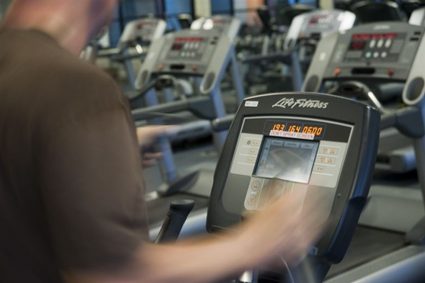
What exactly is 1 MET, then? It is defined as the ratio of energy spent per unit time during a specific physical activity to a reference value of 3.5 ml O₂/(kg·min). While the MET values allow us to compare activities, they don't measure energy directly. So you need another step to answer the question how many calories do I burn a day doing a particular activity? Answering that requires some recalculation and for you to convert milliliters of oxygen to calories before we arrive at the final formula:
calories = T × MET × 3.5 × W / (200 × 60)
where T is the duration of activity in seconds, and W is your weight in kilograms.
Our calorie burn calculator uses the formula above for the most accurate estimation of calories burned. If you want to run your calculations by hand, you can also use a simplified version of this equation:
calories = MET × T × W
This equation is based on the approximation that 1 MET = 1 kcal / (kg·h). It is not 100% correct since the real equivalence is 1 kcal/(kg·h) = 1.05 MET, as you can check from the initial formula. Nevertheless, the approximation simplifies calculations so much that a mere 5 percent difference is an acceptable price to pay.
How many calories did I burn while cycling?
If you want to calculate the weight loss or calorie loss after a certain physical activity, make sure to follow the steps below. We have chosen to calculate the calories burned cycling, but you could calculate the calories burned walking following these same steps. It's only the MET value that changes.
-
Choose your activity and determine its MET value. For example, for cycling, MET = 9.5.
-
Input your weight into the calories burned calculator. Let's assume you weigh 90 kg.
-
Determine the duration of the activity. Let's say you went for a whole day trip and were biking for 7 hours straight.
-
Input all of these values into the calorie burned formula:
calories = T × 60 × MET × 3.5 × W / 200calories = 7 × 60 × 9.5 × 3.5 × 90 / 200 = 6284.25 kcal≈ 6284 kcal -
Finally, divide this value by 7 hours to obtain the calories burned per hour:
6284 / 7 = 897.75 kcal/hr≈ 897.7 kcal/hr -
Additionally, you can divide the calculated burned calories by 7700 to obtain your weight loss:
6284.25 / 7700 = 0.8161 kg≈ 0.82 kg
Congratulations! Your bike trip just helped you lose 0.82 kg (if burning fat only). However, how we mentioned above, it's not as simple.
A deeper look at MET and the calorie calculator
Let's now step back a little bit and look at how MET is calculated and what it really means. MET is a metric that assigns a single value to a particular activity, but, as anyone that has run or cycled frequently knows, the same exercise can vary in intensity significantly depending on the effort. There is a difference between going for a leisure ride with your kid and racing in a criterium, even if they both take the same time.
This is an effect that this calculator does not take into account: intensity. For this reason, the calories burned calculator needs to be understood as an approximation and not as a precise measurement. The METs we have encoded into this tool are just a guide based on averages and typical values for an average person.
However, one can correct for this issue by simply customizing the MET value directly. We do not recommend doing this unless you know what you are doing or using a . The important thing to remember is that the MET values are not the be-all-and-end-all and should be taken with a pinch of salt. They, however, help you easily compare the calorie consumption expected from different exercises and activities. Simply choose the I want to compare two activities option.
BMR or how many calories per day you burn without doing anything
Another aspect that people tend to forget when thinking about how to calculate calories burned per day is the basal metabolic rate or BMR (also called resting metabolic rate). BMR measures the minimal metabolic rate or calories burned by "just being alive". It is defined as the calorie-burning rate of an animal at rest. We can also see it as the lowest valid answer to the burning question of how many calories do I burn a day?

BMR is not a fixed value; it can vary from person to person. Using very simplistic examples, we can take a look at how the BMR changes for a person. When we exercise a lot, we need more calories to compensate for the expenditure during our activity and put our body into a more active rest state when the time comes to recover. Recover is the keyword here since, at rest, our body has to keep functioning like any other person's and also has to recover from the exercise and rebuild energy stores and muscle tissue with the consequent increase in BMR.
On the other hand, we can lower our BMR by having a very sedentary lifestyle, which we do not recommend. On top of that, calorie intake has a significant effect on the BMR of a person. When we restrict calorie consumption significantly, our body goes into what is called "starvation mode". In this state, the body senses a lack of food and adapts accordingly, reducing the BMR as much as possible so that it can use those precious, finite calories to move or think.
This last effect is particularly counterproductive when trying to lose weight by reducing their food intake, and it's the reason why many people can't seem to lose weight even when eating half as much as they did before. Starvation mode is also partly responsible for the rebound effect people experience after finishing a diet. We do not recommend losing weight by reducing the calorie intake unless you have professional advice since it can lead to nutrient deficiency and all the associated health risks.
Burn more calories with these exercises
So now the question is: How do I burn more calories? The answer is, as always, it depends. There are two major ways to burn more calories depending on whether you are restricted by time or not. Assuming you don't have a time limit, the answer is as intuitive as it gets: exercise for longer. As you can see by using the calculator, the more time you dedicate to exercise, the more calories you burn in total.
However, most of us are usually restricted by the time we have available to exercise after taking care of our priorities like work, family… In this case, the answer is exercise with more intensity. The harder you train, the more calories you will burn. A higher running pace will burn more calories… But how long can you sprint?
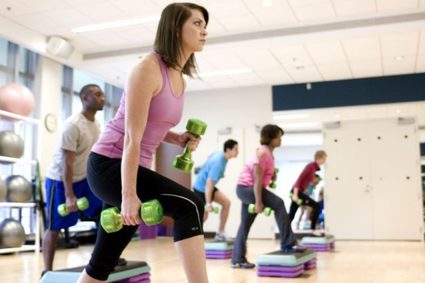
And this is the reason HIIT is so trendy right now. HIIT or high-intensity interval training is a way of structuring your exercises so that you can keep the intensity very high (as the name implies) but also keep up this intensity for a long time. The trick is to introduce periods of rest between high-intensity bursts. This method is by far the most efficient way to burn more calories, and it's unbeatable in terms of calories per time exercising.
On top of the fact that you will consume a higher number of calories, HIIT has a second advantage. HIIT is a very efficient way to raise your BMR. During HIIT exercise, we create micro-damage in our muscles (don't worry, it's all good) that the body later repairs, building a bigger and stronger muscle. That is how we get fitter and stronger, and it's a process in which the number of calories burned at "rest" is significantly increased compared to steady-state cardio exercises, not to mention compared to a sedentary lifestyle.
HIIT comes in many forms, from taking any sport and breaking down the activity into intervals of mixed high intensity and low intensity (active recovery) to even weightlifting and fitness. It might sound counter-intuitive, but the calories burned lifting weights can rival a full-body exercise such as dancing when we consider the total calories burned throughout the day. On top of that, and with proper nutrition, the calories burned lifting weights will also help you build more muscle and prevent heart disease.
Burn calories and prevent heart disease with fitness
You might be thinking (especially if you're of a younger age) that the purpose of exercising and burning calories is mostly weight loss and fitness benefits. However, there's much more to exercising than looks and records. It is recognized by every doctor that regular exercise is the second-best thing you can do for your health after quitting smoking (you will also save money by not smoking), and the very best thing if you're not a smoker.
Among the benefits of exercising, we can point to psychological well-being and increased happiness, as well as physical health benefits such as an improved immune system, higher bone density, and lowering the risk of heart disease. If we had to point to the most important benefits, it would definitely be the psychological aspect as not only will exercise and burning calories make you happier (exercise releases endorphins), but it also decreases the suicide rates amongst all populations, an excellent effect you must agree.
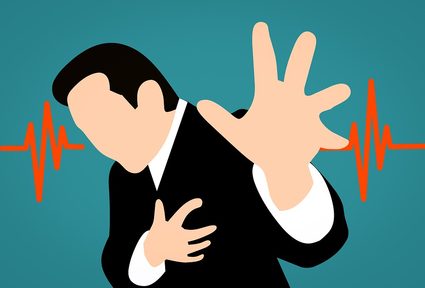
The improvement that exercise has on our cardiovascular system is very significant, and with heart disease being the , it is not something to sniff at. If you are interested in learning more about the heart and what it means to have a healthy one, you can start by visiting our healthy heart rate calculator
But HIIT training and hardcore exercising "it's not for me" you might say. To you, I say: Don't fret! There's a solution. Luckily for us, our bodies are not very picky about the types of training that we do, so literally anything is better than nothing. Walking, dancing, recreational swimming… Anything that moves your body is an excellent way to start; so find something that you enjoy doing, and do it!

Let's get technical: Number of calories in food
Speaking of weight loss, which is the main reason most of you have landed on this calories burned calculator, let's turn our attention away from "how many calories did I burn?" and towards "how many calories per day do I consume?".
If we talk in chemical terms, everything has calories. Everything has some energy inside, from a simple dish of pasta to even a glass of tap water. However, our body cannot process and obtain all the energy contained in everything. To give an extreme example, the energy stored in uranium atoms is enough to create the most powerful bomb in human history. However, if you were to eat uranium, you wouldn't have tons of energy or get super fat. You would just die since it is also radioactive.
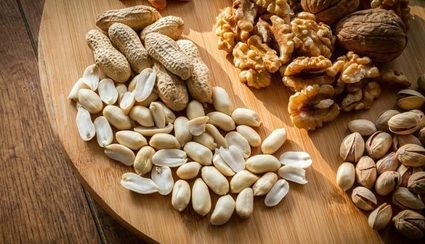
And that's why the concept of the "dietary calorie" was brought into existence. Dietary calories refer to the amount of energy in an edible product to which our body has access. In water, for example, there are no dietary calories because all the energy is stored in its chemical bonds, simply because our body cannot obtain such energy. Luckily for us, when food manufacturers state the number of calories in a particular meal or product, they only write about dietary calories (generally kcal or Cal, to be precise), which means we don't need to make any calculations when watching our food intake.
Once we talk about dietary calories, we can start thinking about weight loss through diets. In very broad terms (purely thermodynamics terms for the most part), the weight loss game seems simple: Calories in minus calories out, and then convert to body fat weight lost or gained. The reality is much more complicated than that, as we will see later, but for now, let's focus on the three main caloric states we can be in:
- Caloric balance;
- Caloric deficit;
- Caloric surplus.
Caloric balance is when the number of calories burned equals the number of calories taken. In the simplistic thermodynamics approach, this is the state in which we don't lose weight, but we also don't gain any weight; we are at balance.
The next state is calorie deficit, the most used tactic for losing weight. In this state, we eat fewer calories than we burn, hence creating such a caloric imbalance. There are two main ways to achieve this imbalance: eating less and exercising more. You can also achieve this state by any combination of these two. Common sense dictates that this is the path to fat burning and weight loss, and that's mostly true. However, we will see in the next section all the understatements and objections that accompany this assumption. See our calorie deficit calculator to learn more.
Lastly, we have the caloric surplus, which is the state of eating more calories than we burn. This state is used to gain weight, mainly in the form of fat. Nevertheless, weight gain doesn't necessarily mean getting fat, as people in the fitness industry know very well. The practice of "bulking" within fitness refers to the practice of eating more calories than the calories burned by lifting weights and, therefore being in a caloric surplus state. All this is in the pursuit of muscle growth.
Bulking typically involves fat as well as muscle gain. This is technically not necessarily so, since to gain muscle, a caloric surplus is not needed, only a "nitrogen surplus" or protein surplus. Reality is more complicated as it can be challenging to eat a lot of high-protein foods without stepping into caloric surplus.
This last fact about bulking suggests that the model "calories in minus calories out" is not the whole story. Let us move into the next section to clarify the nuances of calorie balance and weight loss.
🔎 Are you interested in determining how many calories you should eat a day? Then use our calorie calculator.
Do fats make you fat?
A calorie is a calorie, they say. It might seem right at first sight, but the reality is actually different. For once, there is the obvious issue with the "size" of a dietary calorie. Do you know how many lettuces you have to eat to get 1000 kcal? On the other hand, if you're having a pizza party, you will find yourself exceeding that amount before you start to think you might have had enough.
Then there is the nutrition aspect of food. Our bodies need more than just calories to function, from macronutrients such as carbohydrates, proteins, and fat, to micronutrients like vitamins and minerals. Meeting your body's requirements for these elements is crucial for a healthy life. So when it comes to getting calories, it matters what food you eat, not just the amount of calories.
And last but definitely not least is the hormonal side of eating. This topic is complex and requires intensive knowledge of biology and medicine, so it is often overlooked. However, as time passes and more and more studies come out, the scientific community realizes the importance of understanding the relationship between food and hormones.
In short, there are certain types of hormones that promote different functions in our bodies such as fat burning, fat storage, and even changes in your BMR. Taking all these factors into consideration is crucial to understanding how your body reacts to food intake. It will help you achieve your ideal weight while staying healthy and preventing any future problems or side effects. .
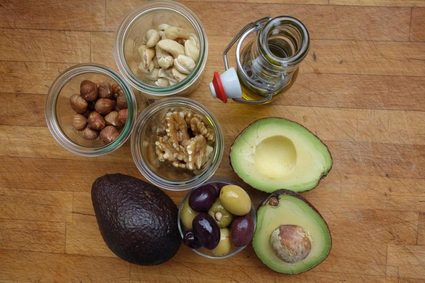
So coming back to "a calorie is a calorie", let's use an analogy to understand why fats are not always bad. While that's true technically, it's also very wrong and misleading. You can compare the idea of "calories in vs. calories out" for weight loss and say that the way to get rich is to "spend less than you earn". Yes, it is true; but it hides the underlying complexity of the problem while offering very little practical help to anyone willing to lose weight (or get rich).
We are obviously not saying that the calories burned or eaten don't matter; as with the case of getting rich, you need to tick that box as a prerequisite. But next time you try to lose weight, don't think just about your calories burned against your calories eaten. Instead, do a little bit of research, eat healthy food, and, if you can, get professional help.
Fun fact: how you lose weight when you sleep
And lastly, let's take a look at a fun fact about weight loss without necessarily involving exercises or burning calories. It is common knowledge that we are lighter in the morning than we were at night the day before. This fact seems like a bit of a mystery at first sight since it happens even if we don't go to the bathroom in the middle of the night. Let's take a look at where that weight has gone and why this effect is happening to all of us more or less equally.
First of all, we should explain the premise. You can even try this at home if you're feeling skeptical. Get ready for bed, put on your pajamas, do anything you do before slipping into your comfortable bed, but just before you do so, weigh yourself on your home scale. Write down the value and repeat the process in the morning, first thing after waking up.
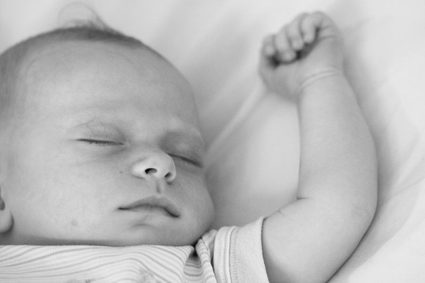
Note that it won't work if you go to the bathroom in the middle of the night or if you pay a cheeky visit to the fridge in the safety of the dark. Assuming you've followed the steps correctly, the reading you get in the morning should be lower than before going to sleep. You can even do this several days in a row, and you'll see the same effect.
When asked for a possible explanation of this outcome, people quickly point at Einstein's mass-energy equivalence. Though Einstein's equation is much more subtle than any weight loss process occurring in our body, this is not a bad guess. In some (very non-physics-like) sense, that's what happens when we burn calories, and as a result, we lose weight.
However, the real reason we wake up lighter in the morning is much more interesting and easy to understand with just the most basic knowledge of science. By process of elimination, we could narrow down the possible causes to the only two mechanisms in which we exchange matter with the outside while sleeping: sweating and breathing. However, sweating doesn't always happen at night, and weight loss can be found even on the coldest of nights with barely any cover on.
So… It must be breathing! Shocked? You should be. It's not immediately obvious how breathing can help us lose weight. If we think in chemistry terms, breathing is no more than the exchange of oxygen (O₂) and carbon dioxide (CO₂) with the environment. Can you already see where the weight loss occurs? Exactly! One gas is heavier than the other.
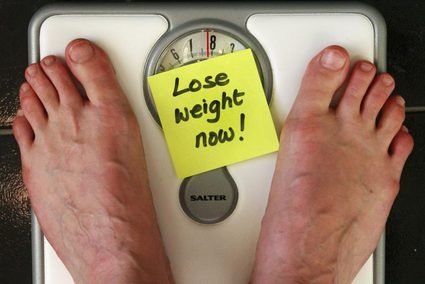
Oxygen has an atomic mass of 16 au, and carbon has 12 au per atom. This variation means that when we inhale, we take in 32 au per molecule of O₂ and then exhale 44 au back in the form of carbon dioxide. The difference is 12 au per molecule, which is not much, but considering how many molecules there are in a breath and how many breaths we take every night, it all adds up. Definitely an unexpected and fascinating explanation for this surprising effect.
Another important thing to realize is that this process keeps happening as long as we are alive. The reason we don't just become lighter from breathing in a couple of days is that this effect is too small when we compare it to the food and liquid we eat and drink every day. Though noticeable in strict conditions (such as over a good night's sleep), the effect is overpowered by the more than 3 kg that we usually introduce in our body in the form of water or food.
Unfortunately, this is not a good way to lose weight. We still need to replenish our burned calories for a healthy lifestyle and exercise periodically to prevent heart disease and keep our weight in check. However, this effect brings to light something fundamental that we should never forget. The number one requirement for losing weight: keep breathing!
FAQs
How many calories do you burn sleeping?
A person weighing 200 lb (91 kg) burns about 96 calories per hour sleeping. So, if they sleep for the recommended 7 hours a night, they will burn 669 calories while they slumber.
How many calories do squats burn?
A person weighing 180 lb (82 kg) that does squats for 10 minutes burns 71 calories. That's 429 calories an hour.
How many calories does push ups burn?
Using moderate effort, a person weighing 200 lb (91 kg) burns 60 calories doing push-ups for 10 minutes.
How many calories do I burn doing nothing?
If sitting, a person weighing 180 lb (82 kg) burns 86 calories per hour. Stand up, and that increases to 129 calories an hour.